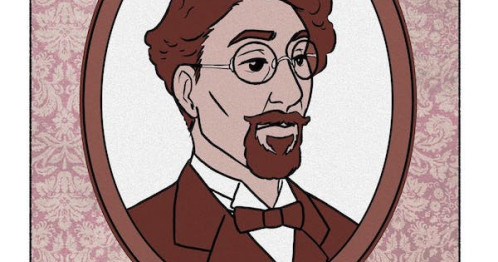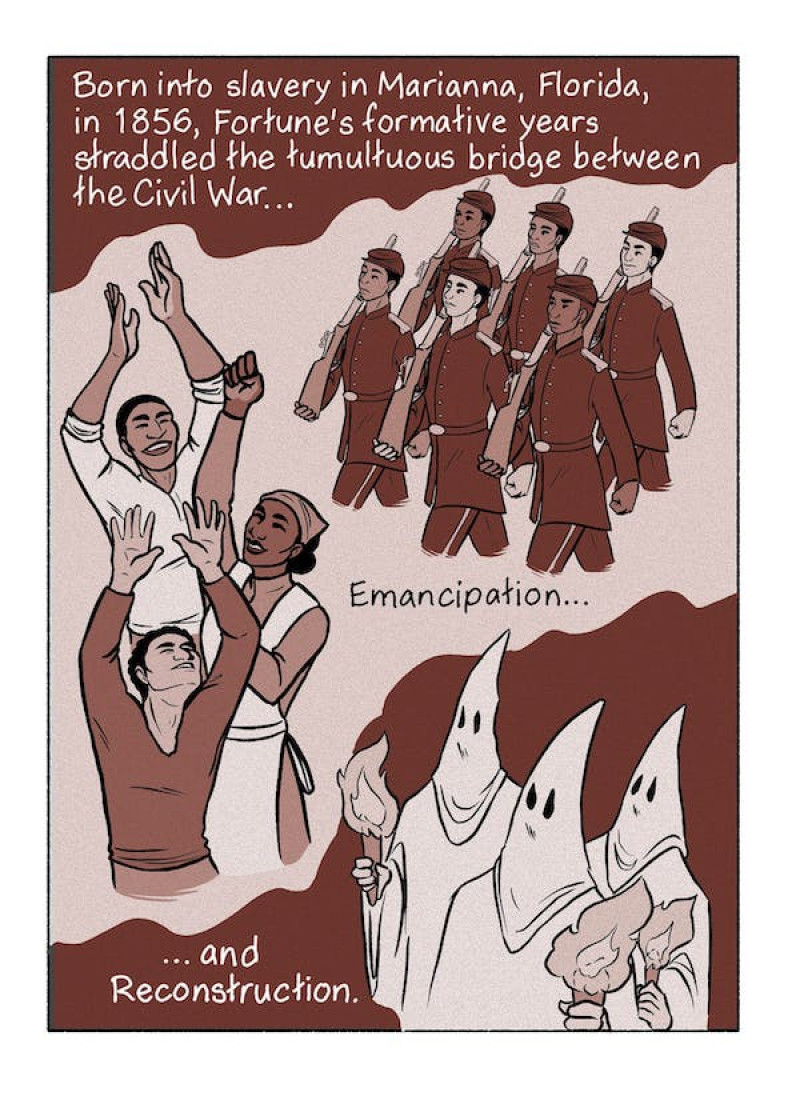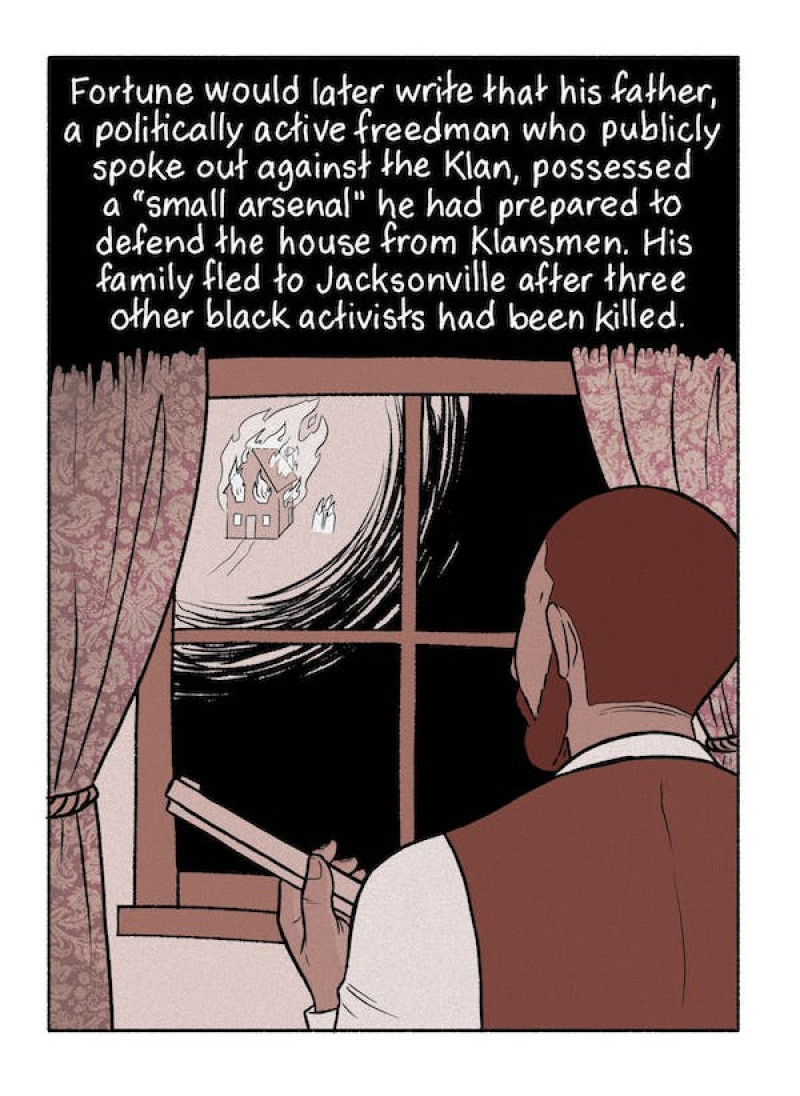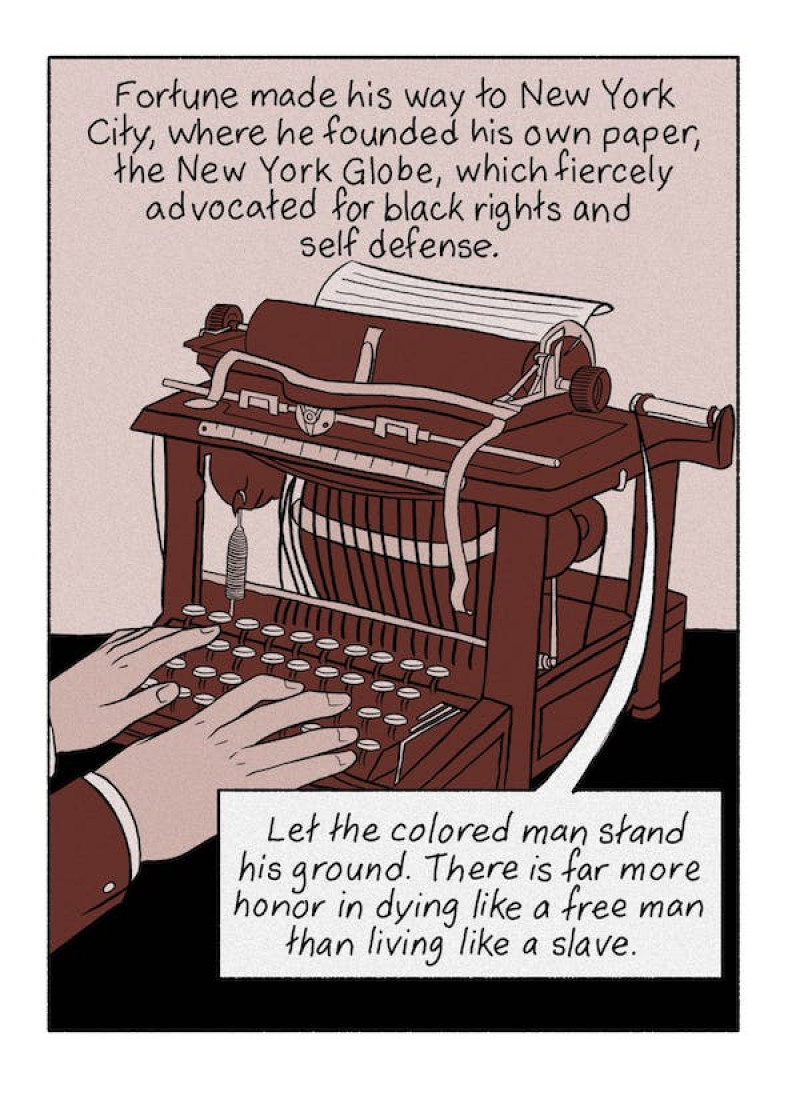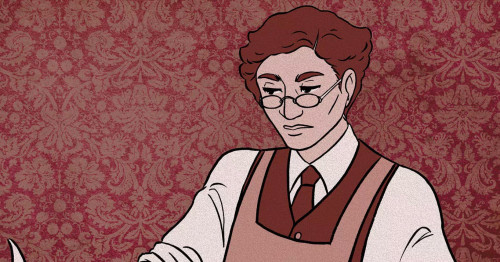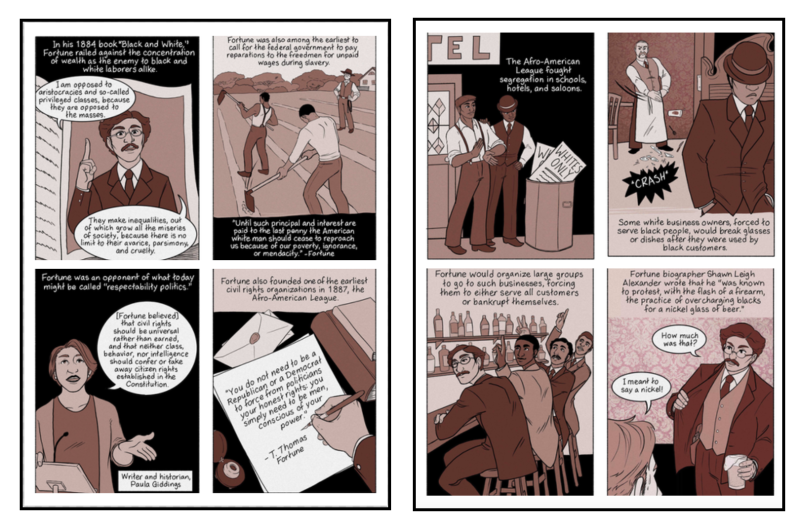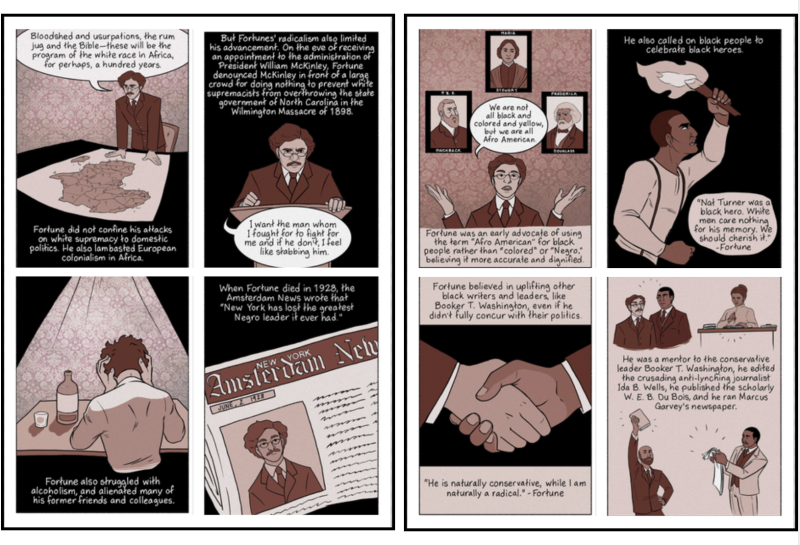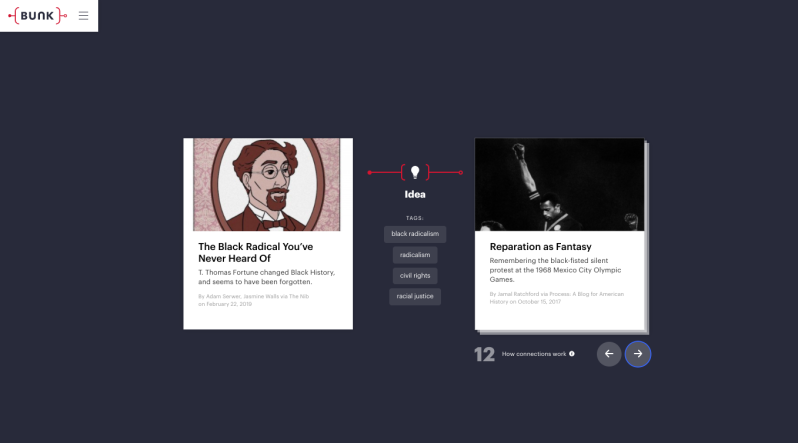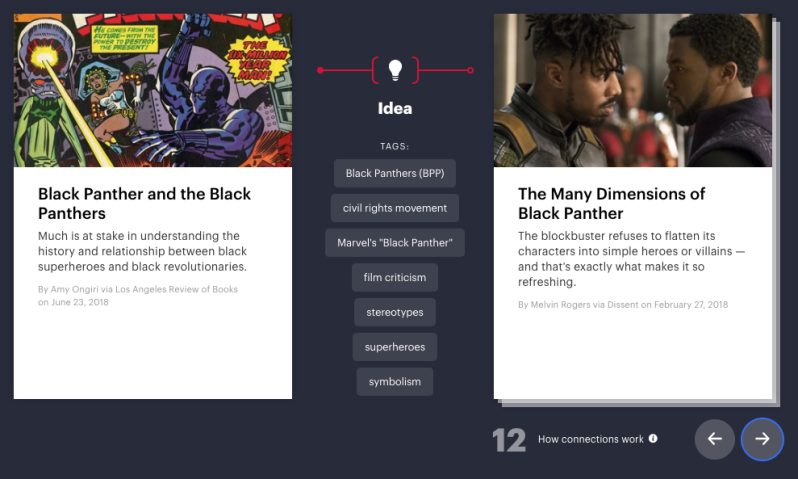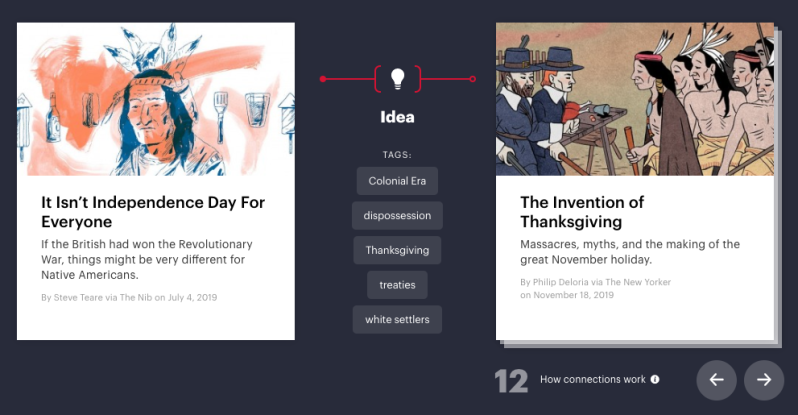This work by New American History is licensed under a Attribution-NonCommercial-ShareAlike 4.0 (CC BY-NC-SA 4.0) International License. Permissions beyond the scope of this license may be available at newamericanhistory.org.
The Black Radical You’ve Never Heard Of
View Student Version
Share this page with your students.
Standards
C3 Framework:D2.His.3.6-8. Use questions generated about individuals and groups to analyze why they, and the developments they shaped, are seen as historically significant.D2.His.3.9-12. Use questions generated about individuals and groups to assess how the significance of their actions changes over time and is shaped by the historical context.
National Council for Social Studies:Theme 2: Time, Continuity and Change
National Geography Standards: Standard 11. The patterns and networks of economic interdependence on Earth's surface
Teacher Tip: Think about what students should be able to KNOW, UNDERSTAND and DO at the conclusion of this learning experience. A brief exit pass or other formative assessment may be used to assess student understandings. Setting specific learning targets for the appropriate grade level and content area will increase student success.
Suggested Grade Levels: Middle/High School
Suggested Time Frame: 2 sessions, 90 minutes each session.
Suggested Materials: Internet access via laptop, tablet or mobile device
Key Vocabulary
Emancipation - The act of freeing from restraint, influence, or bondage (slavery).
Freedman - A man (person) who has been freed from slavery
Radical - A person who advocates fundamental political, economic, and social reforms by direct and often uncompromising methods
Reconstruction - The process by which the states that had seceded were reorganized as part of the Union after the Civil War, timeframe 1865–1877
Reparations - Compensation in money, material, labor, etc., payable by a defeated country to another country or to an individual for loss suffered during or as a result of a war
Read for Understanding
Teacher Tips:
This Learning Resource includes language in the body of the text to help adapt to a variety of educational settings, including remote learning environments, face-to-face instruction, and blended learning.
If you are teaching remotely, consider using videoconferencing to provide opportunities for students to work in partners or small groups. Digital tools such as Google Docs and Google Slides may also be used for collaboration. Rewordify helps make a complex text more accessible for those reading at a lower Lexile level while still providing a greater depth of knowledge.
This Learning Resource uses Turn and Talk to allow students to work with an “elbow partner” for brief collaborations.
These Learning Resources follow a variation of the 5Es instructional model, and each section may be taught as a separate learning experience, or as part of a sequence of learning experiences. We provide each of our Learning Resources in multiple formats, including web-based and as an editable Google Doc for educators to teach and adapt selected learning experiences as they best suit the needs of your students and local curriculum. You may also wish to embed or remix them into a playlist for students working remotely or independently.
For Students:
Who was T. Thomas Fortune? Born into slavery, he became one of the most influential American journalists and newspaper publishers of the 19th and 20th centuries.
Engage
Who are the history makers we never study in our U.S. History classes?
Take a few minutes to read through the entire comic on your own.
Study the first image of T. Thomas Fortune.
- What do you notice about the image?
- What period in time would you place this image?
- How does the image reflect the text written below this image of T. Thomas Fortune?
Examine this image for 2-3 minutes. Turn and talk to a partner about the image. If working remotely, your teacher may let you work using a collaborative document such as Google Docs or Google Slides, or meet virtually via videoconferencing.
- Describe what thoughts or feelings you have about the image.
- Does the way history is presented in this comic seem like other comics you have seen or read in the past?
- How does the comic differ from the textbooks or other ways you learned about this period in the past? Discuss your thoughts with your partner.
Your teacher may ask you to record your answers on an exit ticket.
Explore
Thomas T. Fortune lived through some of the most significant events in U.S. history. How did these events and his early life experiences shape, or influence him later in life?
As we continue to explore Fortune’s story, take a second look at some of the images describing his childhood and early career experiences. (Use the blue arrows to scroll through the images from the comic.)
- Fortune’s father is described as a “politically active freedman.” How might his father’s actions and ideas have influenced Thomas growing up in the post-Civil War era?
- Thomas described his early experiences working for a newspaper by stating “old printing offices were wonderful schools.” What might he have meant by this statement?
- How does Fortune’s statement translate today into modern workforce readiness skills?
- Are internships and real-world experiences as valuable as traditional classroom experiences you have had? Share your thoughts with a partner partner or small group. If working remotely, your teacher may let you work using a collaborative document such as as Google Docs or Google Slides, or meet virtually via videoconferencing.
Your teacher may ask you to record your answers on an exit ticket.
Explain
Fortune has been portrayed in this comic and in history as a “black radical.” How do his words and actions align with this description of Fortune?
The next several images describe the causes and actions Fortune took over his lifetime to end segregation and bring equality and civil rights to all citizens, including people of color. Select one of these images to analyze more closely.
View the rest of the images at The Nib.
Working in a small group, collaborate with 2-3 classmates who each selected a different image from the comic to analyze and explain. If working remotely, your teacher may let you work using a collaborative document such as Google Docs or Google Slides, or meet virtually via videoconferencing.
Share with them your thoughts on the following ideas:
- What social justice issue does this image address? What was Fortune’s point of view or position on this issue?
- Is this an issue still facing our country today? How has society’s thinking evolved around this issue from Fortune’s day to the present time in the U.S? In other parts of the world?
- Share your thoughts on how you might have agreed or disagreed with Fortune on this issue. Use examples from the comic or other sources you’ve seen or read.
- What other historical figures other than those who are more well known might have agreed or disagreed with Fortune? Use specific evidence to back up your claim.
Your teacher may ask you to record your answers on an exit ticket.
Elaborate
Fortune’s “radicalism” extended into celebrating and mentoring others who advocated for racial equality and equal rights. Who are some other key historical figures who continue to lead this cause both here and in other parts of the world?
While Fortune did not always agree with his contemporaries, he continued to be a fierce advocate and mentor to other civil rights activists of his time, some who later became more famous and easily recognized than Fortune himself.
- Which of these other people or events described in the comic did you already know?
- Why do you think some stories or people from the past are more well known than others?
- Is it important to tell everyone’s stories or only certain stories? Who decides?
Work with a partner and review the images from the comic as they appear in the original version from The Nib. Discuss the influence Thomas T. Fortune had on the people and causes he supported.
- What might explain why Fortune did not become a “household name” in history?
Explore Connections in Bunk
One of the best features of studying history using Bunk instead of a textbook is making connections! You may notice these connections are linked to certain icons.
Look for the "View Connections" button in the far right corner. Select this button and read about the different connections you can make to this comic using Bunk. This comic has 12 connections. As you explore Bunk, you'll notice several types of connections being made. They are:
- Idea: Shares several themes
- Core Idea: Shares a fundamental theme
- Person: Involves the same individuals
- Place: Shares a geographical location
- Previously: Similar themes in an earlier era
- Later: Similar themes in a later era
- Meanwhile: Happening around the same time
Use the arrows to scroll through all the different types of connections related to this comic on Bunk.
Each connection is linked to a tag, which leads you to other Bunk entries tagged to a similar topic, idea, time frame, etc.—these connections change as new excerpts are added to Bunk. As you scroll through the connections, use the arrows or the “How Connections Work” button to help make more connections.
- Which one or ones are you most interested in exploring further?
- What surprised you about some of these connections?
Scroll through the images above, using the blue arrows, to view some different connections you can make on Bunk.
- Can you use one or more of these connections to make the case for history books to include another person or event not widely known? Who would you nominate for your teachers to include in future lessons?
- Did you discover something new about someone or something you thought you’d already learned about?
- How could you help tell these stories? What stories do you think still need to be told?
- What will be your story?
Your teacher may ask you to record your answers on an exit ticket.
Citations:
Adam Serwer, J. (2019). The Black Radical You’ve Never Heard Of. [online] The Nib. Available at: https://thenib.com/the-black-radical-you-ve-never-head-of
Bunk History. (2019). The Black Radical You’ve Never Heard Of. [online] Available at: https://www.bunkhistory.org/resources/3921View this Learning Resource as a Google Doc


